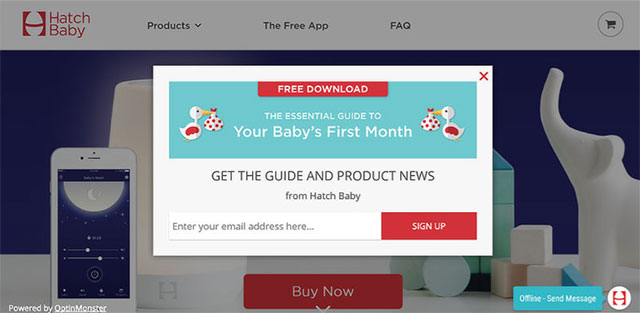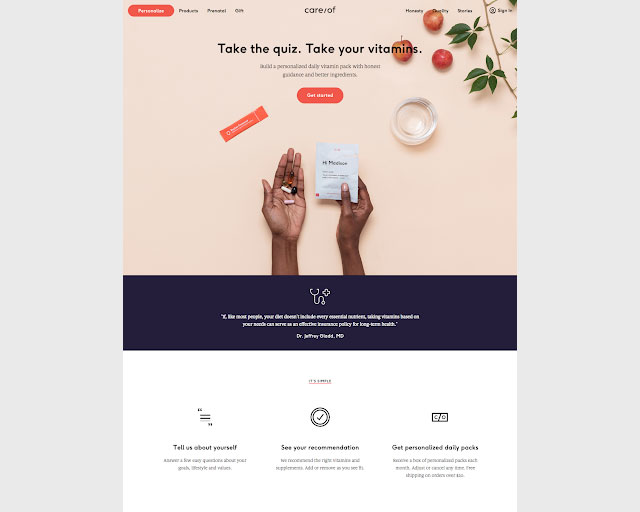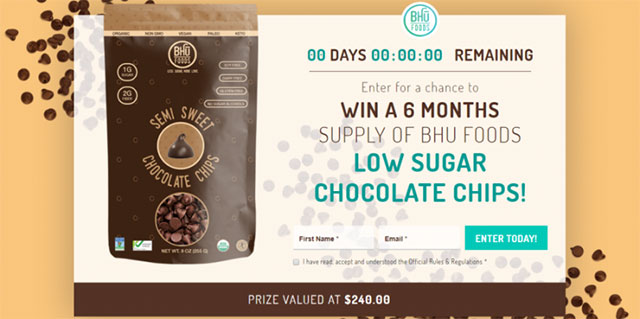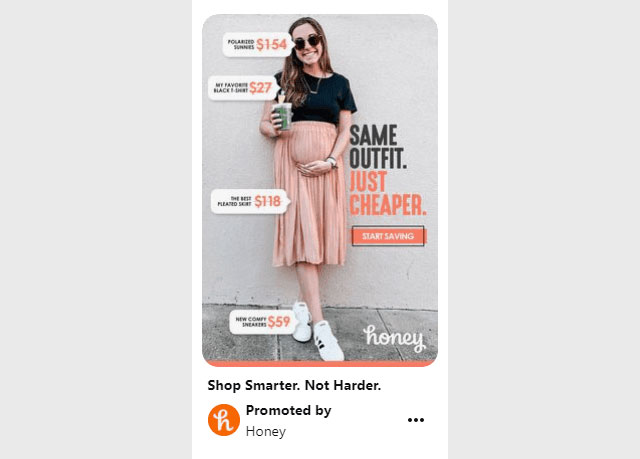Email marketing remains the most effective for generating revenue for an online store among all the available marketing channels.
But the first challenge is not sending out an email; it is getting online shoppers to share their contact addresses with you and building your Shopify email list!
Building an email list can be tricky. But it is not impossible!
You can keep building and expanding your email list with the right email marketing platform for Shopify.. But before that, you need to know the basics!
What is a Shopify email list?
An email list is a list of all the email addresses of the online shoppers that you have acquired via newsletter subscriptions, blogs, contests, discount promises, etc., on your store.
Your subscribers are the people who, at some point in time, have expressed interest in your product and wish to know more about it.
Simply put, a healthy and active email list is a sign of a great Shopify email marketing strategy!
But when other Shopify businesses know this too, and your target audience is already afraid of being spammed in their inboxes and nudged to share their contact addresses, how do you even build an email list for your Shopify store?
That is precisely what we are going to tell you in this article.
Shopify email list building tips to grow your business
#Tip 1: Create personalized call-to-action sales pages
Personalized call-to-actions have a view-to-submission rate that is 42% higher than the CTAs that are the same for all the visitors. So this is the statistic to look out for.
If you want to grow your email list and retain subscribers for a long time, you need to make them see the value in the subscription. Give them relevant and helpful information.
Offer something fun; a quiz, a toolkit, almost anything that you think may help your customer know more about your product or put it to good use. Think value rather than just being able to capture a consumer’s contact information.

#Tip 2: Create pop-ups for your website to increase Shopify email list
Gone are the initial internet days when pop-ups were considered sleazy and annoying. Nowadays, you can utilize pop-ups on your website or on your specific sales pages to build your subscriber email list.
Try not to shove the pop-up in the face of the visitor as soon as they land on the page. Instead, create a buffer time during which it is established that they are indeed interested.
The pop-up can be relevant to the product, a safer option, or relevant to the visitor behavior, which is a more personalized approach.
You can either have scroll pop-ups that appear after the user has scrolled down a portion of the page or an exit pop-up that occurs when the visitor is about to, well, exit or log off.
With Shopify email automation, you can even automate a timed pop-up based on the average time you tend to see people spending on your site.
This HatchBaby exit pop-up is an excellent example of how you can use it to build your Shopify email list. It is timed well with the visitor’s exit and offers knowledge in the form of a short guide in place of the email. This will make the visitor, possibly a new parent, stop, pause, and mostly subscribe.

#Tip 3: Be cheeky with your CTA
Your CTAs are all about subscribing to your Shopify newsletter or buying your product. So, of course, that is the most obvious route. Even online shoppers are used to, thanks to so many options and developments in the market.
But you can make a difference by adding a cheeky angle to your CTA and, for example, allowing your visitor to not subscribe to your email list.
Yes, you heard that right!
The ‘yes’ option is a regular one, but the ‘no’ is where you can get creative and get your visitor thinking.
For example, take a look at these pop-up CTA buttons. It incentivizes the ‘yes’ option and gives a ‘no’ option as well. The ‘yes’ button is more colorful to catch the visitor’s eye, and the ‘no’ button simply indicates dullness that comes with no getting the discount.

This cheeky Madewell pop-up is also a great example. The ‘yes’ button is a usual CTA, while the other option is a meh ‘Hmm’ that makes the visitor wonder, let’s find out what exciting, Sign-up,.’ stuff they can discover on the website before subscribing. So it leads them to another sales page.

#Tip 4: Go valuable with content
‘Subscribe’ and ‘Sign-up’ are the most boring terms in today’s day and age. Imagine practically all websites asking you to ‘subscribe,’ but for what? Deals and discounts, as usual?
Instead of taking the usual route, experiment with Shopify email list building CTAs like ‘Download,’ ‘Get Featured,’ ‘Get Access,’ ‘Exclusive,’ etc., to pique the visitor’s interest.
You see the difference it makes? While subscribing to the newsletter makes it sound like another chore to be added to the visitor’s life, giving exclusive access is like handing them a key to a wonderland.
But at the same time, you need to ensure you’re not disappointing them later, so make sure the content you send across in your newsletter is aligned with your CTA!
Take a look at this CTA.

#Tip 5: Create multiple landing pages
The more, the merrier. It stands true for landing pages. You know your target audience. Segment them as much as possible and create multiple landing pages to cater to all those segments.
A HubSpot research found that when brands increased their landing pages from 10 to 15, they noticed a whopping 55% increase in leads – that’s subscribers, in your case.
The key is to personalize. You do not need to put in more effort; you just need to be clever with copy, design, and development with the same products.
For instance, if you are a multivitamin brand that targets both adults and kids, you can have one landing page with a quiz for adults and another with a fun game for the kids. The key is to distribute the tactics to cover your target audience in diverse combinations and separately.
#Tip 6: Include CTA on your About Us page
Your ‘About Us’ page is where a visitor drops by to know more about your brand, your products, and the people behind the brand. Place a CTA there that encourages them to become pals with you (or your subscribers).
Take the example of this ‘Subscribe’ nudge on the ‘About Us’ page of Heads Up for Tails, a pet supplies brand. Note how they build up the story around pets being family, and the subscribe button is right at the start, in contrast, colors with the offer mentioned (10% off). Once you click on it, the details surface.
Alternatively, it is so tiny that you can even make it hover as a subtle nudge for the visitor to subscribe.

#Tip 7: Create a Smart announcement Bar
If you don’t know what it is, a Smart Bar is a static bar placed at the top of the home page and functions much like the ‘freeze’ function on an excel sheet. As you scroll, it remains constant and fixed.
That makes it pretty hard to ignore, thus making it the perfect place to display something as crucial as a subscribe call-to-action.
You can place anything there, either an incentivized subscription offer or even a first discount, whatever appeals to your target audience.
Alternatively, you can offer discounts on subscriptions and place them on your smart bar/hello bar. It catches the eye, and probably, a subscriber too.

#Tip 8: Check the exit intent
This is applicable when a visitor loses interest in the website and is about to exit. That’s where you recapture their interest with an offer they cannot refuse. This is also a great strategy when you wish to prevent cart abandonment.
Think of it as a strategy to salvage the situation. The visitor is already leaving. Get them to at least subscribe.
You can offer them anything; a good piece of content, a sample, anything that grabs their interest and gets them to click. In this way, you turn a visitor you’re about to lose into at least a subscriber. So that’s a battle half won.
This J Crew exit pop-up gets it right. It knows the visitor is leaving, so it plays out the ultimate trump card.
Likewise, if you want to nudge your leaving customers then learn more about Shopify abandoned cart email.

#Tip 9: Make use of a simple sign-up form
Place these simple sign-up forms on your info-heavy pages such as ‘About Us,’ blogs, etc. A simple sign-up form is a subtle nudge placed on the page and follows the visitor quietly as they scroll down the page.
Think of it this way, if the visitor finds value in the content you are providing, they can immediately sign up for the newsletter or subscribe using the simple form. It’s almost like an upgrade for them, free of cost.
This is one of the most basic examples of how a simple sign-up form should look like. It should not be too heavy on content and design and should not take the attention away from the landing page.
Instead, it should complement it and give the visitor an email notification Shopify of gaining extra knowledge if they subscribe.

#Tip 10: Pre-sell your product
In simple terms, create a pre-order hype if you are going to launch a new product. Even if you have the idea, pre-selling is a much better tactic than waiting for the product to be completed so you can unveil and sell it.
Come to think of it this way, the visitor response to the pre-selling can give you an idea of how well the launch would be received. You can plan your production accordingly instead of manufacturing in bulk that may or may not be sold. Pre-selling can give you a better insight there.
That being said, pre-selling is also a great way to build up your Shopify email list, because it creates an added element of curiosity. Everyone likes new products and visitors and customers are no different. Further, if you add an element of exclusivity, you have already won a subscription.
A good way to do this would be by having a pre-sell landing page.
Take a look at this Glossy Box pre-sell subscription nudge.

#Tip 11: Host a digital event
One of the most important parts of building a Shopify email list is knowing your target audience. If you know what makes them click you have won half the battle. A great way to get them to register in your store and also get to know them better is by hosting a digital event.
For instance, take a look at this invite for a launch by Bhu Events. A simple example, all they do is invite the visitors to know more about the product, and at the same time collect their email ids. Now, whether or not they attend the event, they have subscribed.

#Tip 12: Conduct a survey
Surveys are always helpful and never out of fashion when it comes to selling a product. It is also a great way to stay in touch with your customers and give them a nudge if you feel they are slipping away.
You can do the same with your website visitors as well to get them to subscribe, giving you a chance to get to know them as well.
Take a look at this example. It is a subtle way of addressing the pain point of the visitor, thereby encouraging them to subscribe. No push, nothing, just a simple way of getting to grow your email list.

#Tip 13: Use Facebook groups
Look around, nearly everyone you know is on Facebook. In fact, an average US adult spends at least 38 minutes every day on the app, whereas adolescents spend at least 3 hours. Facebook groups are a great way to connect with your potential subscribers and customers.
Engage with the members of the group by sharing interesting content, your experiences, and interactive content. The goal is to win their trust and not push links that straight up ask for their commitment.
Once you become an active member of the groups, start to subtly share links to your subscription or sales pages with those members who want to know more about you.
Customize and personalize your content depending on the tone and demographics of the group.
Post and then wait. If done right, you can get a lot of subscribers via Facebook groups.
Another great way to do it would be to start a subscriber-only Facebook group, but that’s the next step. First, aim at getting visitors to sign up.
#Tip 14: Swipe up on Instagram
Do you have a business handle on Instagram? Then, if you have more than 10000 followers, you may be missing out on one crucial feature that can help you build your Shopify email list; the swipe-up feature of Instagram stories.
Link your stories to your subscription page, if not all then at least a few, depending on your social media strategy. Just make sure your CTA to make a follower swipe up is clear and you add some engaging content or stickers to make the story more appealing.

#Tip 15: Use Pinterest
Honestly, if it were up to us, we would tell everyone how social media channels are being underutilized when it comes to getting your visitors to subscribe. Pinterest is one such high engagement platform that you can take advantage of.
Have you checked out group boards?
These group boards usually have a lot of people following and can fetch a lot of subscriptions, if you know how to get them. Know how to contribute productively to these groups.
Create an engaging call-to-action that leads to subscriptions and pin it on your board, as well as these group boards on Pinterest. You can eventually start your own group Pinterest board.

#Tip 16: Referrals
Have existing subscribers (or customers)? Ask them for referrals. Incentivize it.
Nearly 80% of online shoppers trust recommendations that come from their friends and family. So leverage that equation to get them to introduce you to their network.
For instance, reach out to them with a personalized message that thanks them for being a part of your brand’s family. Then ask them if they would be willing to share about your brand with their friends and family. Incentivize every sign-up they get to sweeten the deal!
This may not be an exhaustive list, but is surely an effective one that you can use to start building your email list using the Shopify email marketing app. You will start getting results.
Why is email list building important?
Email list building establishes a channel between your business and the consumer for a conversation that’s more personal, and 1:1. But here are some statistics that further prove the value of building an email list:
- Email works better than social media. Nearly 85% of people use email while 62% use social media
- According to the industry surveys, the email open rate is 25% and its clickthrough rate is 3.5%, which is way better than even Facebook with a reach rate (equivalent to open rate) of just 6%!
- The ROI for email marketing can be as high as 4400%
Start growing your Shopify email list now!
It is not that difficult. All you need is the right strategy in place and the tools to implement it.
BayEngage is a smart tool that lets you design and trigger pop-ups across your online store to nudge visitors to share their email addresses. And once you do have a solid email list in place, you can make use of BayEngage to design high-converting email communication that turns those subscribers into customers.
There, now you have two powerful tools to get started with building a Shopify email list to promote your business!











